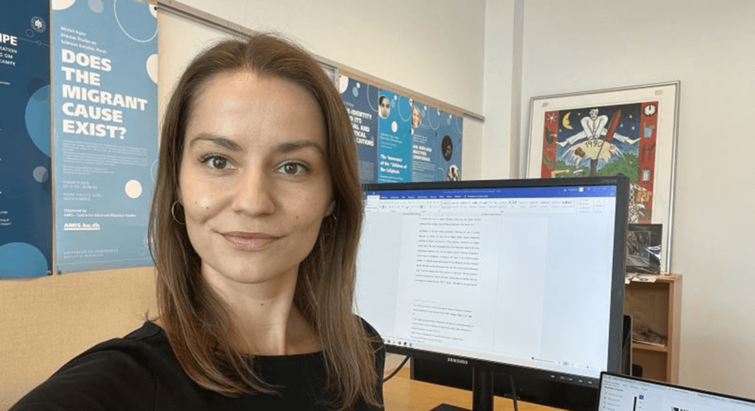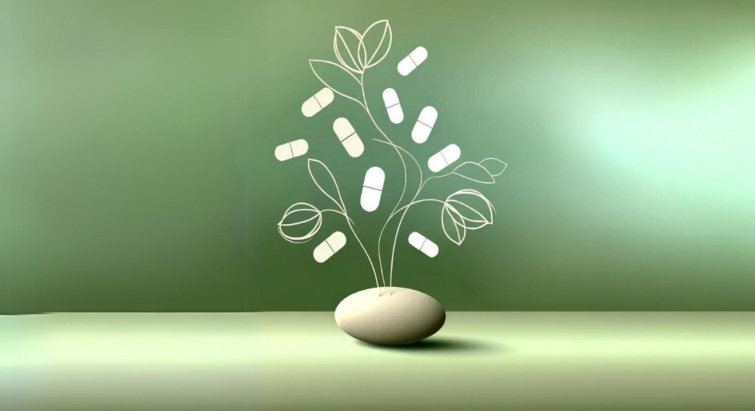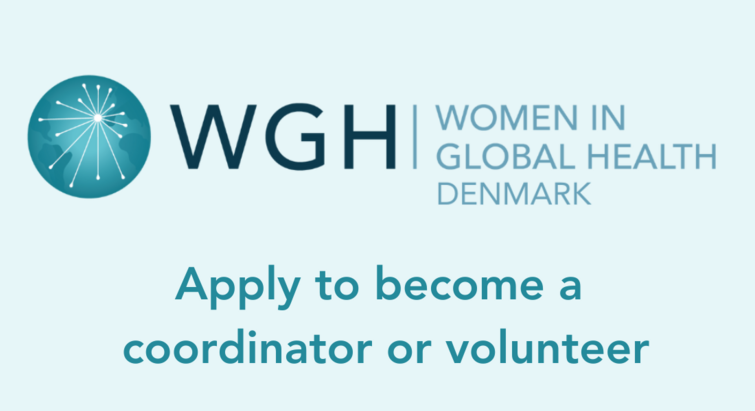
COVID-19 in Sri Lanka: A unifying crisis?
With less than a thousand confirmed cases, Sri Lanka currently seems to avoid a large scale COVID-19 crisis. But the corona pandemic is not without consequences for the 22 million people living on the island in the Indian Ocean. Authorities have responded quickly to the threat but lockdown restrictions poses significant challenges for the country’s daily wagers, self-employed, large migrant work force, school children forced to stay at home in the urban centers as well as its many farmers. Closure of alcohol outlets have sparked an increased demand for illegal home-brewed alcohol and social distancing have caused a significant increase in child abuse and domestic violence. On the positive side, COVID-19 seems to unite the war-torn country.

Text: Morten Mechlenborg Nørulf / Pictures: Manjula Weerasinghe
We called Manjula Weerasinghe - a post doc and project manager at the Department of Community Medicine at Rajarata University of Sri Lanka in Anuradhapura - to get a report on the COVID-19 situation in Sri Lanka and how the lockdown restrictions are affecting the population.
The 900+ Sri Lankan COVID-19 cases might not present the full picture. “These are the confirmed cases – there will be more that have not yet been diagnosed” Weerasinghe reminds us. But overall, he agrees that the Sri Lankan situation is well controlled, compared to many other countries.
A curfew has been in place since 17 March 2020, closing society and borders at large. Universities, schools, the international airport, social events and two major traditional ceremonies – new year’s festival and Vesak – were closed down. Only 4 out of Sri Lanka’s 24 districts have been marked as high-risk areas - Colombo (capital region), Gampaha, Kalutara and Puttalam – with more restrictions in place here.
A quick response
Early on, Sri Lanka established a system to respond to the situation. A special advisory committee to the president was set up, including experts from important fields of society such as clinical and public health, economy, defence, education etc. “This committee have been responsible for the prevention and control strategy in Sri Lanka. They meet regularly with the president and decisions have been communicated to the public at least two times a week. Generally the public distrust governmental committees but with this one, people seem to appreciate its work and efforts” Weerasinghe explains.
Sri Lanka is a middle-income country still facing major developmental challenges. Due to the lack of accurate health data, one of the first things the COVID-19 committee did was to establish a system for monitoring hospitals admissions and increase diagnostics capacity. Hereafter, other prevention measures recommended by WHO followed, in order to flatten the curve.
Sri Lanka has 2,42 intensive care unit (ICU) beds per 100.000 inhabitants, which is sufficient if you look at the current COVID-19 numbers in the country, according to Weerasinghe. Separate hospitals and care units have been set up to treat COVID-19 patients in each province and quarantined people receive excellent care, including free accommodation, transport and psychological support. People who are willing to pay, can even stay in five star hotels at a reasonable price. Furthermore, electronic media has been helpful in communicating clear guidelines and advice for the population on how to behave during the crisis.
Returning migrants is bad for the Sri Lankan economy
The Sri Lankan economy is very much dependent on the approximately 1,5 million international migrant workers sending home money from other countries. Many Sri Lankan migrant workers are expected to return home due to lockdowns in countries where they work, especially the Middle East where many women are employed as domestic labours.
“When they start to come home, it poses a significant challenge to the Sri Lankan economy, and there is a great deal of uncertainty in terms of when they can return to the countries they work. On the other side, some of the migrant works are stranded in foreign countries with no possibility of returning to Sri Lanka. And should they return, there is a chance that they could be virus carriers. And finally, what would happen if they returned to the country they work in and that country got hit badly again by a second wave of corona virus outbreak? These times are definitely the hardest and the most complex ones for vulnerable people like migrant workers” Weerasinghe explains.
The effect on the agricultural community
Although a curfew is in place, the government allowed farmers to carry on with their work. In North-central Sri Lanka where Weerasinghe lives, 70% of the population are farmers, as is the case for many other places in Sri Lanka. “With so many farmers in Sri Lanka, it is a good decision to let them work. If they are not able to provide for themselves, this would cause another crisis.”
Furthermore, the government have been subsidising fertilisers for the past two months during “Maha” – one of Sri Lanka’s two cultivating seasons – which means that the farmers can get them completely free of charge. Nevertheless, the curfew creates another problem for the farmers: they have no one to sell their harvest to. One of the government’s strategies has been to buy up the farmers' products through army personnel. However, things might start to look better soon as the country has slowly started to open up, starting last Monday the 11th May 2020.

Illegal alcohol is in high demand
Since 17 March, all alcohol outlets and liquor stores have been closed in Sri Lanka. Supposedly, alcohol could have an effect on COVID-19 immunity but it has not been communicated clearly why the government decided to close the stores.
Unfortunately, this have had some unforeseen consequences. “All of a sudden there is a huge demand for homemade alcohol. The illegal alcohol called Kasippu normally costs 350 Sri Lankan rupees. Now, because of the ban, I see prices up to 2,000-3,000 rupees per bottle. And imported labelled alcohol can cost up to 6,000-10,000 rupees per bottle. Normally they are around 3,000 rupees” Weerasinghe tells.

Online education is for the privileged
Whereas many success stories about taking education online have been heard in many high-income countries, it is quite another story for countries like Sri Lanka. Here, schools and universities also have to conduct online lectures but it have been very difficult for many to do so.
“Many students and teachers simply do not have the facilities and means to change to new teaching methods. Education is free in Sri Lanka but it is only the private schools and universities that have been successful in taking the teaching online. Many public schools have no way of doing this” Weerasinghe explains.
Increasing domestic violence and child abuse
A far more serious consequence of the lockdown in Sri Lanka is the increasing cases of child abuse and domestic violence.
“Closing schools and having the children stay at home is not ideal for all, especially the children in rural areas. Some articles have been reporting a 30% increase in child abuse during the first three weeks of the lockdown. I have also seen increasing numbers when it comes to domestic violence and colleagues working in hospitals confirms that they are seeing more cases of this as well.”
The curfew makes it hard for the victims to seek help and support and social distancing makes it even harder for them to find someone to share their experiences with. This will increase self-harm and suicide, Weerasinghe fears.
Positive developments
Like the rest of the world, Sri Lanka is learning from the crisis. As they are preparing to open the country again, they are also adjusting to the thought of living with corona and preparing for future similar scenarios.
“The country has learnt the importance of having responsive preparedness plans in place. We are increasing our ICU beds, and local interventions are used. For example, we can now produce our own PCR machines for 14,000 rupees. Something we previously had to import for 200,000-300,000 rupees. Local engineers, medical doctors and biomedical engineers are staring to develop more medical equipment” Weerasinghe explains.
Online shopping has also gained ground during the lockdown and generally more people are seeing the benefits of switching to technology.
Uniting the country?
It is the first time Sri Lanka experience a lockdown of this proportion. They have had their share of political violence and a 30 year civil war has traumatised the country but never have they experienced an official lockdown like this.
Weerasinghe is seeing a significant unity among the population due to the crisis. “There is stability among the different religious groups and cultural differences, which exists especially between Sinhalese, Tamils and Muslims, have been set aside by the crisis. We should really appreciate this moment, where all three major religions in the country stand together against COVID-19” Weerasinghe says.
But will the peace and unity last? According to Weerasinghe, then yes. “COVID-19 will be here for the years to come, probably. This is long enough for people to get behind the idea of one nation.”
Manjula Weerasinghe is a long-time research collaborator of the Global Health Section at University of Copenhagen as well as a lecturer on the summer course in Sri Lanka offered by the School of Global Health. Manjula is also a research associate at the Centre for Pesticide Suicide Prevention, University of Edinburgh. From 2005-2009 he worked on various suicide prevention programmes together with School of Global Health’s Director, Flemming Konradsen. In 2010, Weerasinghe and Konradsen, together with a large team from Sri Lanka and international partners, have initiated larger community trials focusing on the prevention of pesticide self-poisoning in Sri Lanka. You can read about their research in the below articles:
- Are left-behind families of migrant workers at increased risk of attempted suicide? – a cohort study of 178,000+ individuals in Sri LankaBMC Psychiatry, 2019
- Vendor-based restrictions on pesticide sales to prevent pesticide self-poisoning - a pilot study
BMC Public Health, 2018 - Effectiveness of household lockable pesticide storage to reduce pesticide self-poisoning in rural Asia: a community-based, cluster-randomised controlled trial
The Lancet, 2017
News


Health data storage has a climate cost. In the future data may be stored in DNA

Waste products could innovate pharmaceutical material design

